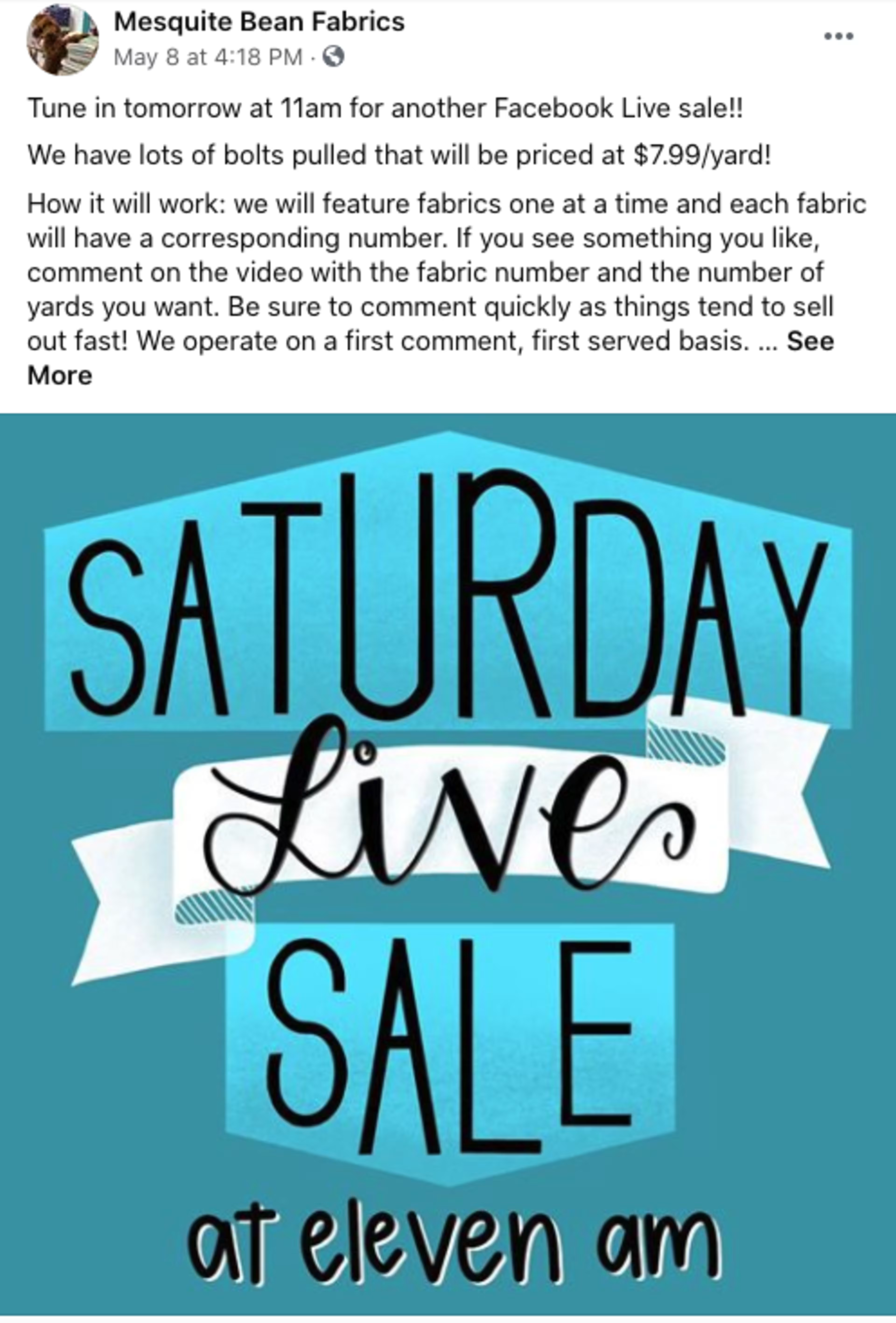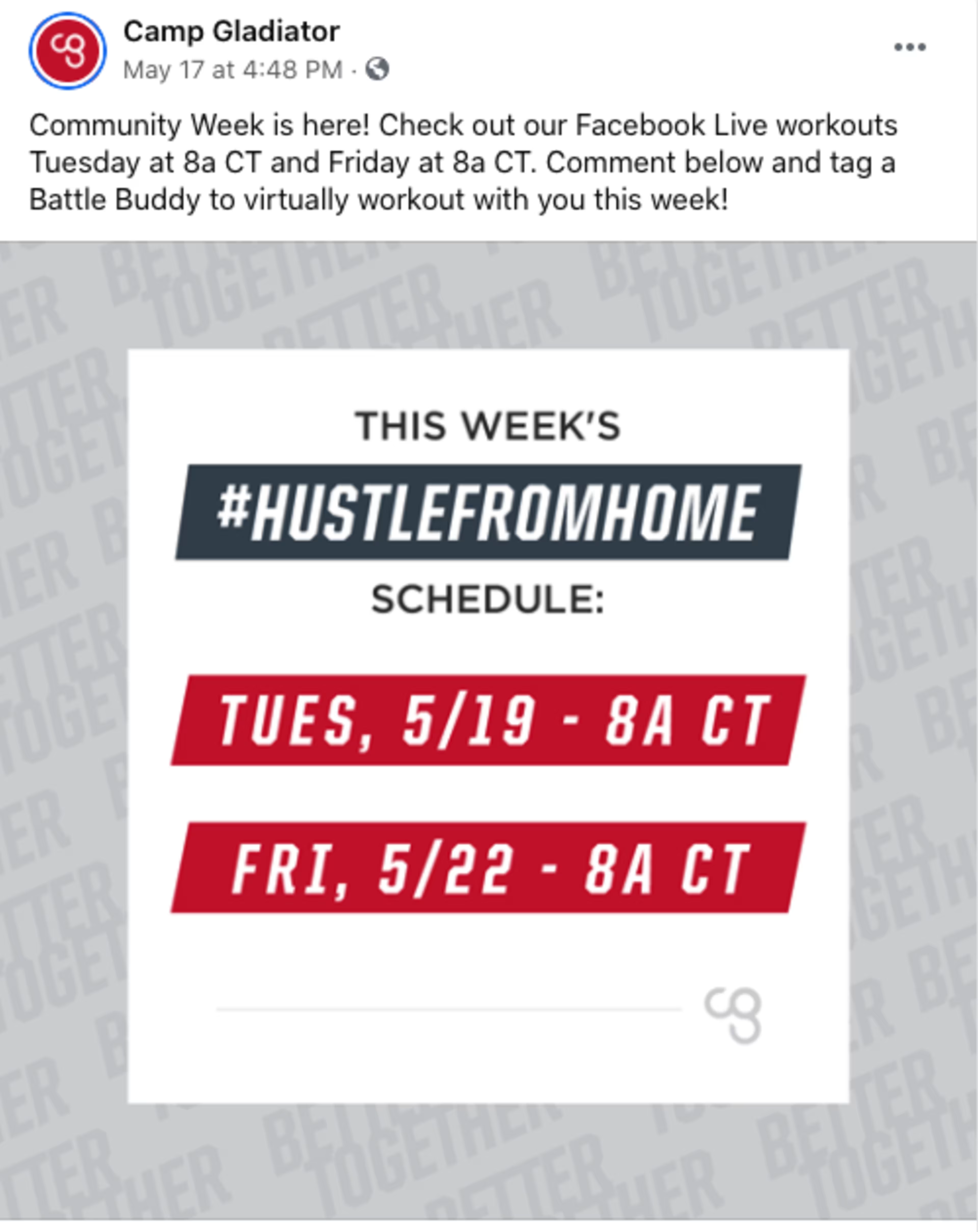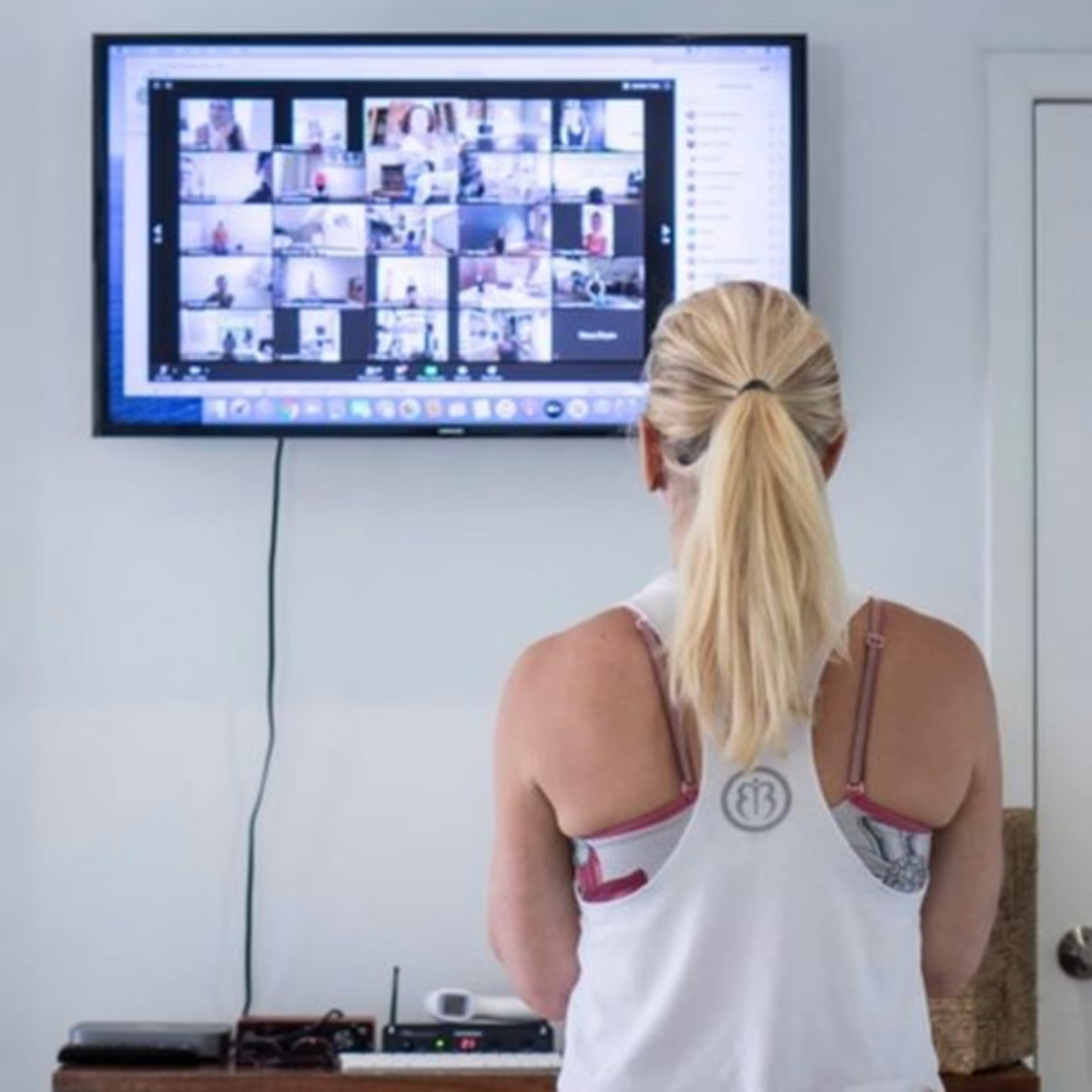Small-business owners share tips on how to future proof your business
Small-business owners have to be nimble, whether they’re dealing with a pandemic, a recession, or any other major crisis that comes their way. If you want to future proof your business, the best thing you can do is foster a sense of flexibility and innovation.
In that spirit, we asked four small-business owners to share tips to help others learn how to survive and even grow their eCommerce business during a difficult situation.
Tip #1: Be adaptable so you can shift your business model and not lose out on sales
Mesquite Bean Fabrics, a San Antonio fabric store, turned to Facebook Live for the first time to host virtual sales in order to make the buying process more interactive and closer to what it would be like in person.

Mesquite Bean Facebook Live Saturday sales events
“Our customers were very excited to be able to interact and shop with us even if it was only through a video,” said Katie Wheeler, Mesquite Bean Fabrics administrative coordinator.
Mesquite Bean Fabrics was also able to offer curbside delivery since they qualified as an essential business. Even though they were used to being primarily a brick-and-mortar store, the store had to adapt quickly. Their goal was to reach both existing and new customers who wanted to learn new quilting skills during shelter-in-place restrictions.
Even though Mesquite Bean was closed, they still experienced a slight uptick in sales in April 2020 as many people were making homemade masks.
“Most of the people calling were people who have never sewn before, but some were quilters looking for a quilt shop, some of whom have said they've found their new favorite shop,” said Wheeler.
Similarly, Austin-based Camp Gladiator was also able to adapt quickly using a phased approach when it came to their fitness options.

Camp Gladiator’s #HustleFromHome workouts
“To start, we worked in early March to go completely virtual and this began with the easily accessible #HustleFromHome workouts, which are live, trainer-led, free workouts daily hosted on our active Facebook page,” said Jeff Davidson, Camp Gladiator's Co-Founder and Co-CEO.
Davidson said Camp Gladiator then scaled up with another type of workout, the Choose to Move Challenge, which was six weeks long.
Takeaways:
Be open to learning new skills.
Be creative in stringing solutions together.
Consider a phased approach.
Tip #2: Pivot quickly to retain existing customers
Those businesses that acted fast were able to keep their customers on board and engaged through a tumultuous time. It’s hard enough for customers to manage their personal lives and establish a new routine during the pandemic, so coming up with a game plan quickly was essential for retention.
Desirae Pierce, owner and instructor at Austin-based Breath and Body Yoga said the lockdown happened to align with what was already a limited spring break schedule. This gave her time to figure out how to set up her studio for virtual workouts.

Breath and Body Yoga studio owner/instructor Desirae Pierce chatting with students before class on Zoom
“I kept classes the same time on Zoom that they would be in the studio,” said Pierce. “I was still offering the product and they could still have the product consistently at their house and with the same teacher.”
Thanks to keeping things so smooth for her customers, Pierce didn’t have any attrition in moving from in studio to fully remote workouts.
Takeaways:
Moving fast is vital for keeping things consistent for your customers.
Tip #3: Ensure your website user experience (UX) makes purchasing easy
When you don’t have the benefit of having a live, in-person conversation with your customers, it becomes incredibly important to foster a good user experience online. UX may not be something many small-business owners are used to tackling, but just as you would encourage good customer service in person, it’s important to extend that experience to the digital realm as well.
Although Mesquite Bean Fabrics was used to being a brick-and-mortar store primarily, they noticed they needed to make some updates to their website to help with sales.
“We've added more categories on our website that help our customers navigate it better,” said Wheeler.
“We've also added a drop down menu for every product that lets customers choose what they want us to do if we don't have the full amount that they ordered.”
Mesquite Bean is also working on additional updates to make their site more user-friendly.

Mesquite Bean Fabric’s website
Austin-based Barrett's Micro Roast Coffee also needed to make changes to their website to enable free delivery options for coffee.
“We have definitely seen a very big increase in online orders for shipping even well outside our local community,” said Travis Kizer, Barrett’s Micro Roast Coffee owner and roaster.
In addition to adding online orders, Barrett’s also accommodates a text messaging ordering system where customers can use Venmo or Paypal for completely contactless deliveries.
Takeaways:
Ask your vendors for help with eCommerce, or do your own research to find out how to improve your UX.
Tip #4: Ensure employees feel safe and set up for success
Ensure you’re keeping channels of conversation open with your employees, as they’re often your best advocates with customers.
“Your staff are the pillars of your business,” said Desirae Pierce, Breath and Body Yoga owner and instructor.
Pierce never cut staff pay or hours and made sure her staff felt safe. For instance, she provided hand sanitizer, gloves and masks to make them feel well taken care of.

Doorstep delivery sign at Barrett’s Micro Roast gifted by a customer
Barrett’s Micro Roast Coffee remained open throughout the pandemic with walk up window service and contactless card readers that accept Apple Pay, Google Pay, or digital payment.
“At first it felt super impersonal and awkward but our staff, myself, and the customers feel good about [...] the safety of it,” said Travis Kizer, owner and roaster at Barrett’s Micro Roast Coffee.
Kizer said it’s more important to prioritize the safety of staff and customers over trying to maximize profits.
Takeaways:
Employees are your best advocates with customers, so ensure they’re on board with any digital business model changes.
Create resilient habits to guard against future disruptions
Even if you consult a crystal ball, it’s impossible to predict what business challenges are coming around the corner. However, when it comes to future proofing your small business, being flexible, adaptable and creative are key -- as well as taking care of your staff.
For your tech stack in particular, Capterra can help take the guesswork out of the process when it comes to eCommerce software solutions. Visit our website to browse top user-rated platforms and get advice on how to purchase software.